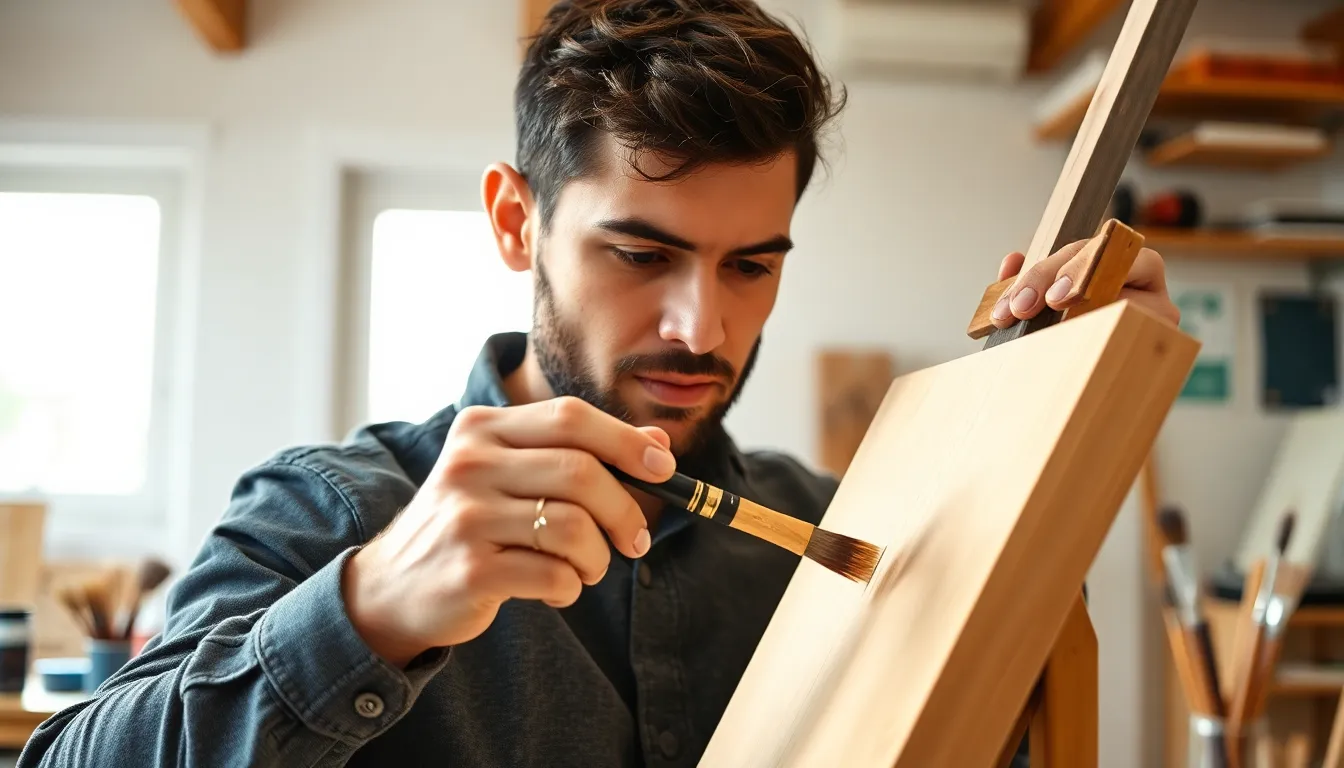The Best Fluffy Pancakes recipe you will fall in love with. Full of tips and tricks to help you make the best pancakes.

How to Not Leave Brush Strokes When Painting: Secrets for a Flawless Finish
Every painter has faced the dreaded brush stroke dilemma. One moment you’re channeling your inner Picasso, and the next, your masterpiece looks more like a fuzzy cat than a serene landscape. Fear not! Mastering the art of smooth finishes is easier than finding a cat video on the internet.
Understanding Brush Strokes
Understanding brush strokes is essential for achieving a flawless finish in any painting project. Various factors contribute to the presence of brush strokes, and recognizing these can help artists refine their techniques.
What Causes Brush Strokes?
Brush strokes typically arise from improper technique, which includes applying too much paint or using the wrong brush type. Insufficient paint on the brush can also lead to visible streaks. Surface texture plays a significant role as well; rough or uneven surfaces tend to accentuate strokes. Environmental conditions, such as temperature and humidity, impact the drying process and can affect how paint flows on surfaces. Additionally, the viscosity of the paint itself can influence the thickness of application, which may lead to strokes if not managed correctly.
Importance of Smooth Finishes
Smooth finishes enhance the overall aesthetic of painted surfaces. A clean and professional appearance attracts more viewers, whether it’s furniture, walls, or artwork. Achieving this finish reflects skill and attention to detail, which are critical in both professional and hobbyist painting. Smooth surfaces also contribute to durability; they resist wear and are easier to clean. Furthermore, a flawless finish allows colors to appear richer and more vibrant, elevating the quality of the work. Therefore, mastering techniques to eliminate brush strokes directly influences the success of a painting project.
Techniques to Avoid Brush Strokes

Achieving a smooth finish in painting requires specific techniques. Understanding these strategies significantly impacts the final appearance of the work.
Choosing the Right Brush
Selecting the appropriate brush influences the application of paint. Synthetic brushes suit water-based paints, while natural bristle brushes excel with oil-based paints. Opt for brushes with fine bristles for a smoother finish. Smaller brushes allow for detailed work, reducing visible strokes. Various sizes and shapes cater to different painting styles, so the right choice matters.
Proper Paint Consistency
Maintaining paint consistency is crucial for smooth application. Thinning paint with a suitable medium enhances flow and minimizes the appearance of strokes. For acrylics or latex, adding water up to 10 percent can improve texture. Stirring paint thoroughly ensures an even mixture, preventing clumps that cause brush marks. Consistency not only affects look but also affects how paint spreads on the surface.
Application Methods
Achieving a smooth finish requires specific application methods that minimize brush strokes. Two effective techniques include using a roller or sprayer and adapting to different painting surfaces.
Using a Roller or Sprayer
Rollers distribute paint evenly across larger areas, reducing the chance of visible brush strokes. Sprayers provide an even coat without texture, ideal for achieving a flawless finish. Both tools work well with various paint types. Adjusting the roller’s nap or sprayer’s nozzle size contributes to different surface textures. Achieving a sleek surface involves maintaining a consistent wet edge while applying paint to avoid streaks. Proper technique ensures that the final coat appears smooth and professional.
Working with Different Painting Surfaces
Each surface type requires a tailored approach for optimal results. Smooth surfaces like drywall offer less resistance, allowing for easy paint application. Conversely, textural surfaces like wood may necessitate additional care; using a brush helps fill gaps while ensuring even coverage. Surface preparation plays a pivotal role; cleaning and priming enhance paint adherence and smoothness. Testing paint on a small area first guarantees desired results without unexpected brush strokes. Thus, understanding the specific surface characteristics aids in achieving the best finish.
Tips for a Flawless Finish
Achieving a smooth, brushstroke-free finish requires attention to detail and technique. The following tips enhance results for any painting project.
Best Practices While Painting
Use synthetic brushes for water-based paints and natural bristle brushes for oil-based options. Choose fine bristles and smaller sizes for intricate areas, reducing visible strokes. Thinning paint promotes better flow; adding up to 10 percent water for acrylics enhances texture. Use rollers for larger areas to ensure even coverage, while sprayers provide a sleek finish without texture. Keep a consistent wet edge during application to prevent streaks. Test paint on a small area before full application to confirm desired results.
Common Mistakes to Avoid
Neglecting surface preparation often leads to poor finishes. Always clean and prime the surface beforehand; this step ensures better paint adhesion. Overloading the brush causes drips and unevenness. Instead, dip only to the bristle line to avoid excess paint. Applying too much pressure while painting creates unwanted texture. Maintaining a light touch eases movement and promotes smooth coverage. Rushing through a project results in errors; take the time to follow each step carefully for optimal results.
Conclusion
Achieving a brush-stroke-free finish is within reach for any painter willing to practice and apply the right techniques. By selecting the appropriate brushes and maintaining proper paint consistency, the quality of the work can improve dramatically. Utilizing tools like rollers or sprayers can also enhance the smoothness of the application.
Attention to detail during surface preparation and application will make all the difference. With patience and careful execution, painters can elevate their projects and enjoy the satisfaction of a flawless finish. Embracing these strategies not only boosts aesthetic appeal but also showcases a commitment to craftsmanship.
